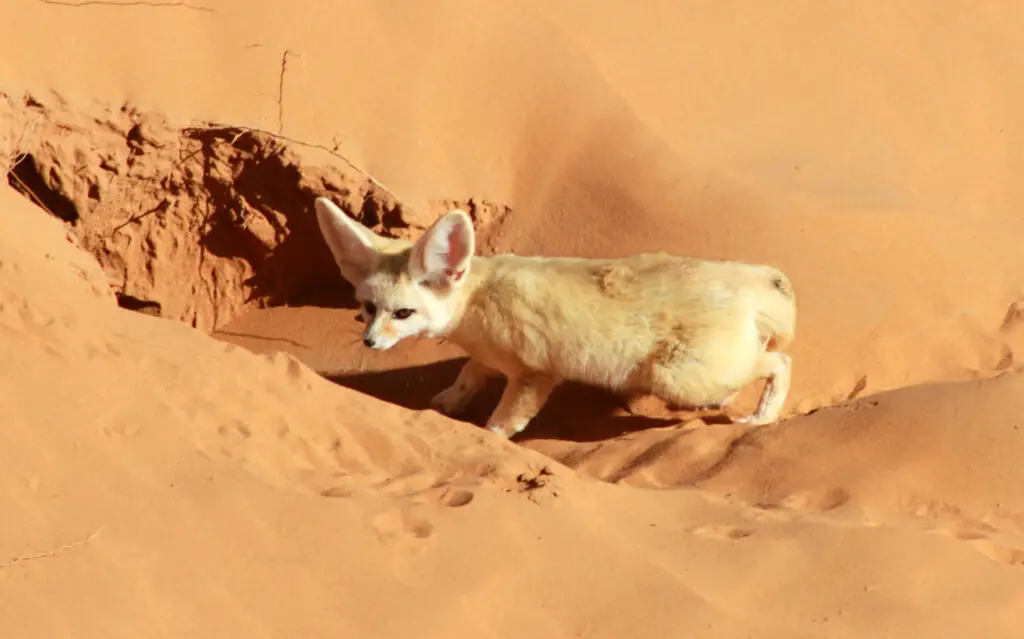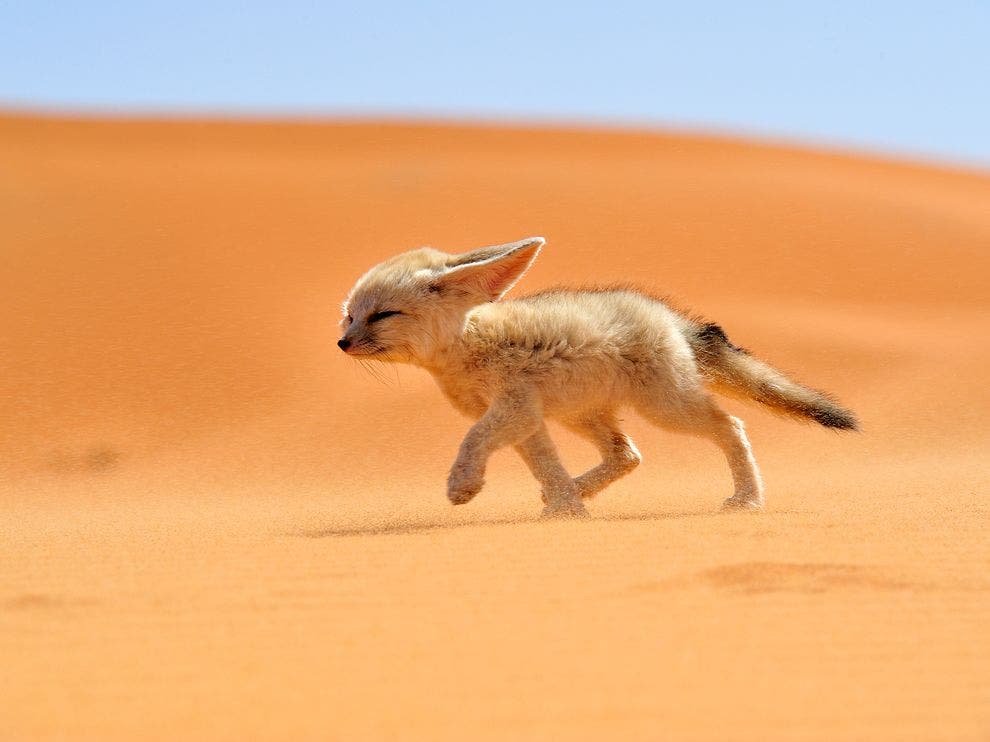The Fennec Fox (Vulpes zerda) is an extraordinary little creature that stands out as the smallest species of fox in the world. Found in the vast, sandy deserts of North Africa and the Arabian Peninsula, these foxes are perfectly adapted to life in some of the harshest environments on Earth. Their distinctive large ears and adorable appearance have made them a favorite among wildlife enthusiasts, but there’s much more to these desert dwellers than just their looks.
1. Small Size, Big Adaptations
Despite being the smallest of all fox species, weighing only 1 to 1.5 kilograms and measuring about 20-40 cm in body length, the Fennec Fox is a true desert survivor. Its most noticeable feature is its disproportionately large ears, which can grow up to 15 centimeters long. These ears help the Fennec Fox dissipate heat and keep cool in the scorching desert sun. But that’s not all—they also allow the fox to hear its prey, such as insects, small rodents, and reptiles, from great distances, even under the sand.
Fennec Foxes have thick, sandy-colored fur that reflects sunlight during the day and provides insulation during cold desert nights. The soles of their feet are covered in thick fur, which helps them walk on the hot sand and offers protection from extreme temperatures.

2. Surviving Without Water
One of the Fennec Fox’s most remarkable adaptations is its ability to go for long periods without drinking water. In the desert, water can be scarce, but Fennec Foxes get most of their hydration from the food they eat, such as plants, insects, and small animals. They are also able to minimize water loss through their urine and feces, which is crucial in their arid habitat.
This ability to survive without much water makes the Fennec Fox well-suited for life in the Sahara and other desert environments. However, when they do come across water, they will drink readily, taking advantage of every opportunity.

3. Social Behavior and Habitat
Fennec Foxes are nocturnal animals, which means they are most active during the cooler night hours, hunting for food and avoiding the extreme daytime heat. They live in small family groups, digging complex burrows in the sand where they sleep during the day. These burrows provide them with shelter from predators and the harsh desert temperatures.
Despite their small size, Fennec Foxes are known to be quite vocal, using a range of sounds to communicate with each other. From barks to growls and squeaks, these tiny foxes have an impressive range of vocalizations for both warning and social bonding within their group.
Conclusion
The Fennec Fox is a true marvel of the animal kingdom, with its unique adaptations making it one of the most resilient creatures in the desert. From its giant ears and minimal water needs to its ability to thrive in harsh climates, the Fennec Fox proves that even the smallest animals can survive and flourish in the most extreme conditions. Their beauty, intelligence, and survival skills make them a fascinating subject for both animal lovers and researchers alike.
If you ever have the chance to encounter a Fennec Fox, whether in the wild or in a conservation area, you’ll be witnessing one of nature’s most adorable yet formidable desert dwellers.




